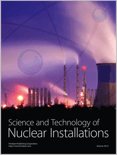
Science and Technology of Nuclear Installations
metrics 2024
Unveiling Breakthroughs in Nuclear Engineering
Introduction
Science and Technology of Nuclear Installations, published by HINDAWI LTD, is an esteemed scholarly journal specializing in the dynamic field of nuclear energy and engineering, with an ISSN of 1687-6075 and an E-ISSN of 1687-6083. Since transitioning to an Open Access model in 2007, the journal has significantly contributed to the dissemination of innovative research and practical applications in nuclear technology, attracting a global audience from both academia and industry. Based in Egypt, this prominent journal serves as a vital platform for researchers seeking to explore advanced methodologies, cutting-edge technologies, and the sustainable development of nuclear installations. Achieving a commendable Q2 category ranking in Nuclear Energy and Engineering and positioning at #35/77 in Scopus rankings (55th percentile) underscores its influential presence within the scientific community. With a publication horizon extending from 2008 to 2024, the journal remains committed to fostering collaboration and innovation in nuclear science, making it an invaluable resource for researchers, professionals, and students alike.
Metrics 2024
 0.38
0.38 1.00
1.00 0.90
0.90 29
29Metrics History
Rank 2024
Scopus
IF (Web Of Science)
JCI (Web Of Science)
Quartile History
Similar Journals

Problems of Atomic Science and Technology
Advancing the Frontiers of Atomic Science.Problems of Atomic Science and Technology is a leading journal in the realm of nuclear physics and technology, published by the esteemed Kharkov Institute of Physics and Technology. With an ISSN of 1562-6016, this journal is dedicated to disseminating high-quality research and advancements in atomic sciences, contributing significantly to both academic and practical applications in the field. Although not an open access publication, it ensures rigorous peer review standards to maintain the integrity and relevance of cited works. The journal seeks to provide a vital platform for researchers, professionals, and students who are engaged in the exploration of atomic phenomena, nuclear engineering, and associated technologies. Published from Kharkov, Ukraine, the journal also serves as a bridge for international collaboration and innovation, making it indispensable for anyone looking to stay at the forefront of atomic science research.

Nuclear Physics and Atomic Energy
Exploring the frontiers of atomic science.Nuclear Physics and Atomic Energy is a reputable open-access journal that focuses on the fields of nuclear physics and high-energy physics, providing a forum for researchers, professionals, and students to share their findings and advancements. Published by the Institute of Nuclear Research, National Academy of Sciences of Ukraine, this journal has been committed to disseminating knowledge since its inception in 2006, ensuring that scientific advancements remain accessible to a global audience. With an ISSN of 1818-331X and an E-ISSN of 2074-0565, the journal features a diverse array of articles that span the continued exploration and application of nuclear phenomena. Although currently categorized in the Q4 quartile for Nuclear and High Energy Physics in 2023, the journal is steadily working towards increasing its impact and engagement within the academic community. With a Scopus rank of #74 out of 87 in its category, it serves as a valuable resource for advancing crucial research in a vital scientific area. Researchers are encouraged to contribute their innovative studies to foster collaboration and knowledge sharing in this dynamic field.
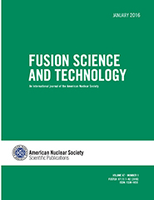
FUSION SCIENCE AND TECHNOLOGY
Pioneering breakthroughs in fusion technology for a brighter tomorrow.FUSION SCIENCE AND TECHNOLOGY is a leading peer-reviewed journal published by Taylor & Francis Inc., dedicated to the advancement of knowledge in the fields of nuclear science, engineering, and fusion technology. With an impact factor that reflects its growing significance, this journal provides a platform for innovative research that addresses the challenges and opportunities within Civil and Structural Engineering, Materials Science, Mechanical Engineering, and Nuclear Energy and Engineering. Its open access option facilitates wider dissemination of groundbreaking research, enhancing visibility and accessibility for researchers, professionals, and students alike. As a member of the Q2 and Q3 Quartiles across various categories—demonstrating its reputable standing among peers—the journal plays a crucial role in fostering collaboration and sharing the latest scientific discoveries in fusion and related technologies from 2001 until 2024. This makes it an essential resource for anyone engaged in the multidisciplinary aspects of fusion science, contributing to the development of sustainable energy solutions.
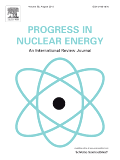
Progress in Nuclear Energy
Unveiling breakthroughs in nuclear energy applications.Progress in Nuclear Energy is a premier academic journal published by Pergamon-Elsevier Science Ltd, dedicated to advancing the field of nuclear energy and its applications. With an ISSN of 0149-1970 and an E-ISSN of 1878-4224, this journal has made significant contributions to the scholarly community since its inception in 1977. The journal is recognized for its rigorous peer-reviewed research and has achieved impressive standings in multiple categories, including being ranked Q1 in Nuclear Energy and Engineering and Safety, Risk, Reliability and Quality for 2023. Its impact factor highlights the relevance and influence of the published work within the field. Researchers, professionals, and students seeking a comprehensive overview of current developments will find valuable insights in its pages. Covering a broad time span of publishing years, from 1977 through 2024, Progress in Nuclear Energy remains an essential resource for those involved in the energy sector, particularly in designing sustainable and safe nuclear technologies.
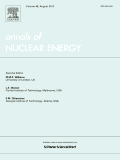
ANNALS OF NUCLEAR ENERGY
Shaping the Future of Sustainable Energy SystemsANNALS OF NUCLEAR ENERGY, published by Pergamon-Elsevier Science Ltd, is a premier interdisciplinary journal in the field of nuclear energy and engineering. Holding an impressive Q1 ranking in its category as per the 2023 evaluations, it is recognized for its significant contributions to the advancement of nuclear science and technology. With its extensive publication history since 1975 and a convergence period extending to 2025, the journal aims to disseminate high-quality research, innovative methodologies, and critical reviews that address the challenges and developments in nuclear energy systems. Though the journal does not offer open access options, it remains a vital resource for researchers, professionals, and students seeking to stay abreast of the latest trends and breakthroughs in this essential field. Its commitment to fostering academic discourse ensures that contributors and readers alike are engaged in shaping the future of energy solutions.

NUCLEAR INSTRUMENTS & METHODS IN PHYSICS RESEARCH SECTION B-BEAM INTERACTIONS WITH MATERIALS AND ATOMS
Exploring the Frontiers of Beam InteractionsNUCLEAR INSTRUMENTS & METHODS IN PHYSICS RESEARCH SECTION B-BEAM INTERACTIONS WITH MATERIALS AND ATOMS, published by Elsevier, is a pivotal journal in the fields of nuclear and high energy physics as well as instrumentation. With an ISSN of 0168-583X and an E-ISSN of 1872-9584, this journal has been a significant contributor to the scientific community since its inception in 1983. Covering an extensive range of topics related to beam interactions with various materials and atoms, the journal serves as an essential resource for researchers, professionals, and students alike. It holds a respectable Q3 category ranking in both instrumentation and nuclear high energy physics as of 2023, indicating its relevance and quality within these domains. While the journal currently does not offer open access options, its invaluable findings are accessible through numerous academic libraries and institutions. With the publication's emphasis on fostering advancements in experimental techniques, instrumentation developments, and theoretical insights, it undoubtedly plays a crucial role in the ongoing progress and innovation in the field.

THERMAL ENGINEERING
Leading the Charge in Energy and Thermal ResearchTHERMAL ENGINEERING is a premier journal dedicated to advancing the field of thermal engineering, with particular importance in the domains of Energy Engineering, Nuclear Energy, and Power Technology. Published by PLEIADES PUBLISHING INC, this esteemed journal has been providing significant scholarly contributions since its inception, with its converged years spanning from 1970 to 2024. Though currently non-open access, the journal presents a unique avenue for researchers, professionals, and students to explore groundbreaking research and innovative solutions related to energy systems and thermal processes. With a notable impact factor and positioned in the Q3 quartile for both Energy Engineering and Nuclear Energy, THERMAL ENGINEERING ensures the dissemination of high-quality research with a global reach, making it an essential resource for those looking to stay at the forefront of essential energy technologies and engineering advancements.
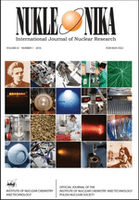
NUKLEONIKA
Innovating Tomorrow's Energy SolutionsNUKLEONIKA, published by SCIENDO, is a leading open access journal that has been serving the scientific community since its establishment in 1968. Focused on the domains of Nuclear and High Energy Physics, Condensed Matter Physics, and Nuclear Energy and Engineering, this journal provides a platform for innovative research and technological advancements in a variety of interdisciplinary fields. With an impressive history of publications and a current Q3 ranking in several categories, including Safety, Risk, Reliability and Quality and Waste Management and Disposal, NUKLEONIKA is recognized for its significant contributions to scientific discourse. Open access since 2014, the journal ensures that all research outputs are freely available, facilitating broad dissemination and accessibility for researchers, professionals, and students alike. Located in the heart of Warsaw, Poland, NUKLEONIKA aims to inspire collaborative efforts and foster a deeper understanding of complex physical phenomena and their practical implications.
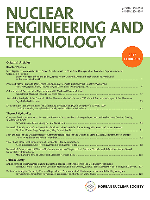
Nuclear Engineering and Technology
Shaping Tomorrow's Energy Solutions through Nuclear InsightsNuclear Engineering and Technology, published by the Korean Nuclear Society, is a premier Open Access journal dedicated to the rapidly evolving fields of nuclear energy and engineering. Established as a significant platform for scholarly communication since 2008, this journal has consistently anchored itself in the academic community, achieving a Q2 ranking in its category as of 2023, reflecting its influence and quality within the domain of Nuclear Energy and Engineering. With an impressive Scopus ranking of #15 out of 77, positioning it in the 81st percentile, the journal publishes cutting-edge research that addresses both fundamental and applied aspects of nuclear technology. Nuclear Engineering and Technology embraces an open access model since 2013, ensuring that valuable research is accessible to a global audience, thereby enhancing collaboration among researchers, professionals, and students passionate about advancing nuclear technology. The journal serves as an essential resource for those aiming to innovate and push the boundaries of knowledge in nuclear sciences.

Radiation Detection Technology and Methods
Empowering Knowledge in Radiation Detection MethodsRadiation Detection Technology and Methods is a prominent academic journal published by Springer Singapore Pte Ltd, dedicated to advancing the field of nuclear and high-energy physics, as well as nuclear energy and engineering. Established in 2017, this journal provides a platform for the dissemination of pioneering research and innovative methodologies in radiation detection technology. As of 2023, it holds a commendable Q2 ranking in both the categories of Nuclear and High Energy Physics and Nuclear Energy and Engineering, underscoring its significance in fostering scholarly discourse within these vital fields. With ISSN 2509-9930 and E-ISSN 2509-9949, the journal aims to cater to a diverse audience of researchers, professionals, and students, emphasizing open access to knowledge. The journal's contributions are particularly crucial for those engaged in the development of safer and more efficient radiation detection techniques, ultimately bridging the gap between theory and practical applications in energy security and health physics. For researchers seeking a dedicated outlet for their work, Radiation Detection Technology and Methods represents an invaluable resource and an opportunity to influence the future of radiation science.